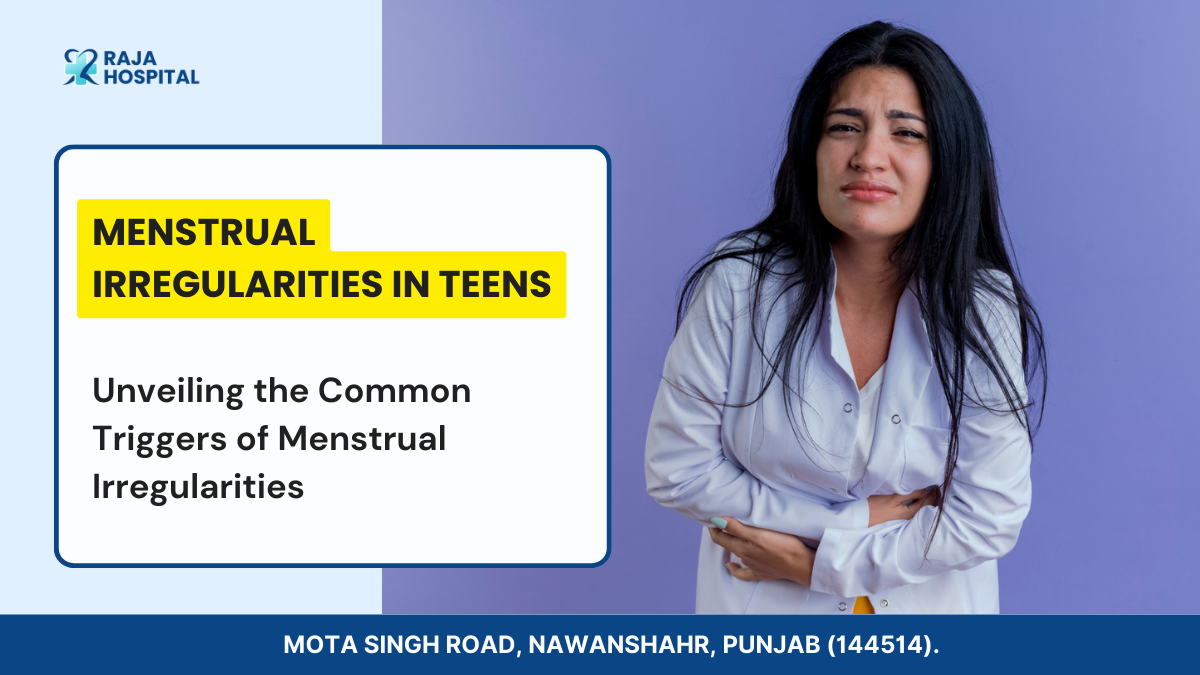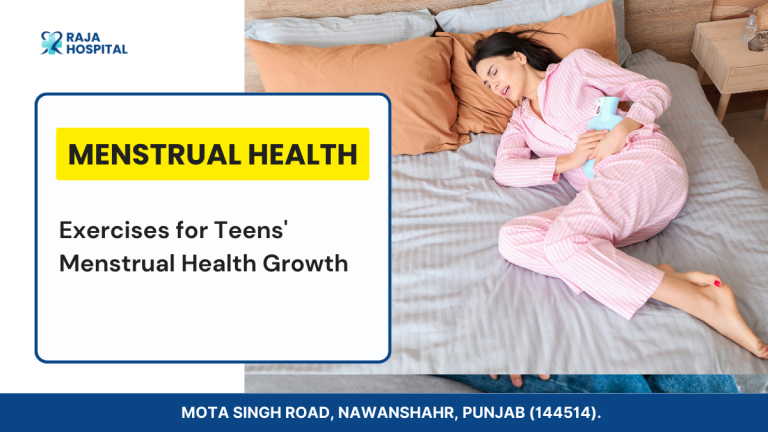Menstrual Irregularities in Teenagers: An In-Depth Guide with Everyday Examples
Reviewed By Dr. LAKSHITA SAINI (MBBS, MS OBS & GYNAE) on 15TH SEPTEMBER 2023.
The journey through adolescence is a roller coaster of transformations, and one of the most prominent milestones is the arrival of menstruation. However, this journey isn’t always a smooth ride, as many teenagers experience menstrual irregularities.
In this comprehensive guide, we’ll delve deep into the realm of menstrual irregularities: understanding their nuances, exploring common causes, and illustrating practical examples to empower you with knowledge and confidence.
Decoding Menstrual Irregularities

Menstrual irregularities refer to deviations or changes from the norm in a teenager’s menstrual cycle. Instead of adhering to the conventional 28-day cycle, adolescents might encounter variations such as shorter or longer cycles, missed periods, or fluctuations in flow intensity. To better grasp these irregularities, let’s take a closer look at each scenario:
Shortened Cycle
Consider your friend Amy, whose menstrual cycle typically spans 28 days. However, this time, her period arrives after only 21 days. This exemplifies a shortened menstrual cycle, showcasing the variability that can occur.
Extended Cycle
Conversely, visualize your cousin Emma, whose regular cycle lasts for 28 days. Yet, this month, her period doesn’t manifest until day 35. This extended cycle demonstrates how timing can sway, introducing irregularity.
Missed Period
Ponder your classmate Sarah, who usually experiences a regular menstrual cycle. Yet, suddenly, she doesn’t have her period for a couple of months. This illustrates the concept of a missed period, indicating that hormonal fluctuations are at play.
Unveiling the Common Triggers of Menstrual Irregularities

Numerous factors contribute to the occurrence of menstrual irregularities in teenagers. Familiarizing ourselves with these factors can demystify the bewildering changes the body undergoes:
Hormonal Swings
Adolescence is akin to a chemistry experiment, as the body generates hormones that regulate the menstrual cycle. Sometimes, these hormones behave unpredictably, leading to irregularities in the cycle.
Stress’s Impact
Envision a scenario where you’re feeling extremely anxious about an impending exam. Stress can intricately disrupt your menstrual cycle by influencing the production of crucial hormones.
Weight Matters
Body weight wields a significant influence on the menstrual cycle. If weight is gained or lost significantly, it can precipitate irregular periods, emphasizing the interplay between body and cycle.
Physical Activity and Its Effects

Lack of exercise and a sedentary lifestyle can cause irregular periods leading to PCOS in some girls.
Polycystic Ovary Syndrome (PCOS)
Conceive of your friend Lily, grappling with acne and inconsistent periods. Lily might be battling Polycystic Ovary Syndrome (PCOS), characterized by the formation of small cysts on the ovaries, causing hormonal imbalances and irregular cycles.
Strategies to Skillfully Manage Menstrual Irregularities
Coping with menstrual irregularities may initially seem overwhelming, but practical measures can be employed to navigate this phase with confidence:
Charting Your Cycle
Utilize a calendar or a dedicated period tracking app to record the onset and conclusion of your periods. This proactive step empowers you to recognize patterns and anticipate irregularities.
Cultivating a Healthy Lifestyle
Reminiscent of a well-oiled machine, your body thrives on nutritious fuel. Consuming a balanced diet, staying adequately hydrated, and ensuring sufficient sleep contribute to a well-functioning cycle.
Mastering Stress
Suppose academic pressure or life demands are mounting. Employ relaxation techniques such as deep breathing, yoga, or engaging in conversations with a trusted individual to mitigate stress’s potential impact on your cycle.
Harnessing the Power of Exercise
Engaging in moderate physical activity can serve as a regulator for your menstrual cycle. Just as a compass guides you, exercise steers your hormones in a balanced direction.
Professional Consultation
Should irregularities persist or intensify, consulting a healthcare professional is advisable. They offer personalized insights and can exclude underlying medical concerns.
Identifying Critical Times for Medical Consultation

While occasional irregularities are par for the course, certain circumstances necessitate prompt medical attention:
Excessive Bleeding
If you find yourself altering pads or tampons every hour or encountering clots larger than a quarter, seeking medical advice is imperative.
Intense Pain
While minor discomfort is customary, if cramps become excruciating, hindering daily activities, reaching out to a medical expert is essential.
Delayed Onset
If you haven’t experienced menstruation by age 15 or haven’t commenced within three years of breast development, consulting a medical professional is paramount.
Conclusion
The expedition through menstrual irregularities during adolescence might appear enigmatic, but armed with insights, you’re equipped to comprehend and manage these fluctuations. Everybody is distinctive, and while irregularities might pose challenges, they embody an integral facet of the remarkable journey to adulthood.
By tracking your cycle, embracing a health-conscious lifestyle, alleviating stress, partaking in regular exercise, and promptly seeking medical advice when warranted, you’re poised to navigate the labyrinth of adolescence with poise and self-assuredness. Remember, knowledge is your guiding light on this expedition of self-discovery and growth.







